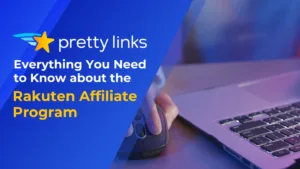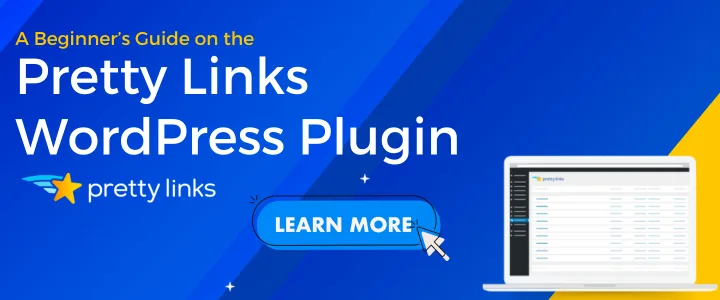Contenu
Alors que vous vous efforcez de créer le meilleur contenu possible pour vos lecteurs, il se peut que vous vous appuyiez fortement sur les outils suivants liens externes pour apporter de la profondeur et étayer vos affirmations. Si ces liens ont certainement leur place, ils ne peuvent pas faire grand-chose pour votre site web, comme améliorer le classement dans les moteurs de recherche et promouvoir votre propre contenu.
C'est pourquoi vous voudrez également utiliser liens internes sur votre site. Ce faisant, vous pouvez fournir un certain nombre d'avantages que les liens externes seuls ne vous aideront pas à atteindre. Il s'agit notamment de l'augmentation de l'engagement des visiteurs et de l'amélioration de la qualité de l'information. un meilleur classement dans les moteurs de recherche.
Dans cet article, nous vous présenterons tout d'abord les principes de base des liens internes, leurs avantages et leurs utilisations typiques. Ensuite, vous découvrirez trois conseils pour mettre en œuvre efficacement les liens internes sur votre site web. C'est parti !
Qu'est-ce que la création de liens internes (et quels en sont les avantages pour votre site) ?
Liens internes consiste simplement à ajouter des liens à votre contenu qui pointent vers d'autres parties de votre propre site web. C'est le contraire des liens externes, qui renvoient à un contenu hors site.
L'utilisation de liens internes est importante pour un certain nombre de raisons :
- Il encourage les lecteurs à naviguer sur votre site et à s'intéresser à d'autres contenus.
- On voit souvent l'amélioration du classement dans les moteurs de recherchegrâce à un flux plus important de 'jus de lienentre les pages de votre site.
- Montrer aux visiteurs des contenus connexes peut diminuer vos taux de rebond.
En outre, les liens internes ont une grande variété d'utilisations, ce qui en fait un outil polyvalent. Ils peuvent, par exemple, donner plus de profondeur à votre contenu le plus récent et exposer de nouveaux lecteurs à votre contenu plus ancien (mais toujours pertinent). Il n'y a pas vraiment d'inconvénient à les mettre en œuvre, à condition de suivre quelques stratégies simples.
Comment utiliser efficacement les liens internes (3 conseils simples)
Il devrait maintenant être clair que les liens internes peuvent apporter de nombreux avantages à votre site web. Examinons de plus près comment mettre en œuvre cette technique le plus efficacement possible.
1. Utiliser un texte d'ancrage optimisé et pertinent

Texte d'ancrage est le texte qui "ancre" un lien, sur lequel les lecteurs cliquent pour visiter la page liée. Étant donné que la plupart des textes d'ancrage sont intégrés à votre contenu (à moins qu'ils ne fassent partie d'un menu, par exemple), il est important qu'ils soient optimisé et pertinent. Cela signifie que le texte doit s'intégrer naturellement dans les mots qui l'entourent, de manière à ce que le contenu conserve sa fluidité. Bien que vous souhaitiez que les lecteurs cliquent sur vos liens, vous ne voulez pas qu'ils soient trop distrayants ou qu'ils semblent forcés.
Pour vous assurer que votre texte d'ancrage est aussi optimisé et pertinent que possible, tenez compte des conseils suivants lorsque vous ajoutez des liens internes :
- Restez naturel : Essayez de créer des textes d'ancrage à partir de mots déjà présents, et évitez de créer des textes d'ancrage à partir de mots déjà présents. l'insertion de phrases non naturelles (tels que des mots-clés maladroits).
- Varier les types de texte d'ancrage: Cela vous aidera à éviter les textes d'ancrage génériques (comme "cliquez ici" ou "en savoir plus") et améliorera la fluidité de votre contenu.
Enfin, il est utile de considérer le texte d'ancrage comme un descripteur de lien. Lorsque les lecteurs parcourent votre contenu, vous voulez qu'ils puissent regarder le texte du lien et prédire exactement le type de contenu auquel ils s'attendent lorsqu'ils cliquent dessus.
2. Lien vers un contenu de haute qualité

En général, un contenu de haute qualité est ce qui apporte de la valeur et construit la crédibilité de votre site. La création de liens vers des contenus de qualité vous permet d'offrir plus de profondeur à vos lecteurs et de promouvoir d'autres contenus de votre site. En outre, plus le nombre de liens pointant vers une page web est important, plus son pagerank est élevé - il s'agit d'un facteur clé dans les classements de Google.
La définition d'un contenu de qualité peut être assez subjective. Cependant, il existe des quelques règles universelles que vous pouvez suivre lorsque vous choisissez le meilleur contenu interne vers lequel créer un lien :
- Se concentrer sur l'actionnabilité : Le contenu exploitable fournit plus de valeur ajoutée pour vos lecteurs. Tout en essayant de rendre votre article aussi utile que possible, vous pouvez également créer des liens vers d'autres contenus exploitables sur votre site afin de les approfondir.
- Veillez à ce qu'il soit pertinent : Il s'agit de créer des liens vers des pages internes qui sont directement liées au contenu en question et qui contribuent à la profondeur et à la valeur de votre article.
Pour commencer, il est facile d'examiner le contenu le plus populaire de votre site. Même s'il n'est pas de la plus haute qualité au départ, vous pouvez l'améliorer et l'utiliser en tant que contenu du pilier sur votre site.
3. Suivez vos liens internes

Le suivi des liens internes est similaire à tout autre processus de suivi des liens. En général, le nombre de clics sur un lien spécifique est comptabilisé et mis à disposition pour examen. Cette méthode est utile car elle vous aide à déterminer les liens qui fonctionnent bien et ceux qui devraient être modifiés ou placés à un endroit plus visible.
Heureusement, lorsque vous raccourcir les liens en utilisant PrettyLinksvous pouvez automatiser la fonction de suivi. De cette façon, vous pouvez rapidement commencer à bénéficier des informations fournies par le suivi des liens. Vous pouvez même créer des rapports de liaison et les exporter pour une analyse plus approfondie. En un rien de temps, vous mettrez en place des liens internes qui augmenteront l'engagement des utilisateurs et le classement des pages.
Conclusion
Les liens internes sont tout aussi important que les liens externes lorsqu'il s'agit d'optimiser votre site et d'inciter les visiteurs à y rester. L'utilisation de ces liens sur votre site web est donc essentielle si vous souhaitez améliorer sa crédibilité. De plus, ils offrent une plus grande profondeur et une valeur ajoutée à vos lecteurs.
Dans ce billet, nous vous avons présenté les avantages des liens internes et offert trois conseils pour utiliser ce type de lien de manière efficace. Pour résumer rapidement, ces conseils sont les suivants :
- Utilisez un texte d'ancrage optimisé et pertinent.
- Créez des liens vers des contenus de haute qualité.
- Suivez vos liens internes avec PrettyLinks.
Avez-vous des questions sur la manière d'utiliser efficacement les liens internes sur votre site web ? N'hésitez pas à nous en faire part dans les commentaires ci-dessous !








